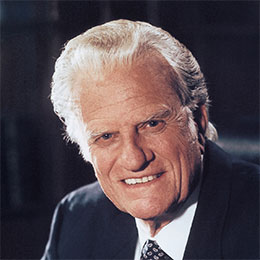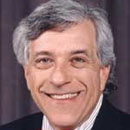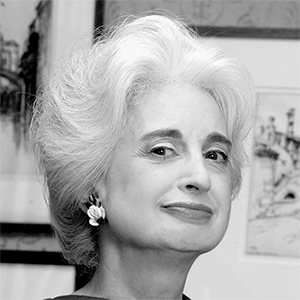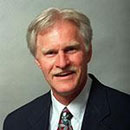Health
/ArcaMax

Lori Borgman: Kids pray the darndest things
We had a good-size crowd together this week. Three out-of-town grands and six grands who live in town, met up for three consecutive days. We rotated from house to house to house so that no one house would be singled out as a disaster area.
Due to the size, volume and rapid movement of the group, my intelligence gathering is often limited to ...Read more

Is 'Singapore math' a better way to teach the subject?
BALTIMORE -- Imagine you’re a character in a math problem. You have three platters, but two cakes. All three platters need to have the same amount of cake. How would you split it?
Without even saying the word “divide,” a group of about 20 teachers from private schools spanning Pennsylvania, Maryland and Virginia, stacked cubes and folded ...Read more

The Kid Whisperer: How to teach kids to have fun without causing problems
Dear Kid Whisperer,
I teach fourth grade. My question is about putting students in teams. I have been pretty successful at keeping them on the same team all year, as you describe in your book. I am just wondering what you suggest when a team isn’t working out for the teacher? For example, some of my students have become very good friends ...Read more

Ex-etiquette: Too close to her ex?
Q. I feel like my wife is too close to her ex. I realize they are co-parents and must talk about their kids, but I caught her on the phone in the middle of the night chatting with him. We did have a problem with her teenage son, and they said that’s what they were talking about, but talking in the middle of the night seems like crossing the ...Read more

Jerry Zezima: Look who's walking
I’m the very model of the modern marching man. And I am determined to put one foot in front of the other until I walk headlong into a wall.
But I can’t say the same for the vast majority of walkers who don’t seem to know where they are going, usually while wandering aimlessly in front of me.
That is why I think people should be given ...Read more
They're here. They're queer. They're farming. New generation of LGBTQ farmers more visible and vocal
CHICAGO -- Laid off by a bar during the COVID pandemic, Jarvi Schneider turned to the internet for job leads.
The Chicago Botanic Garden was offering a training program for would-be farmers that included paid, hands-on experience, and Schneider signed up. That led to a business class and four years growing vegetables at a shared plot in ...Read more

Living without documentation or a home in one of California's hottest regions
LOS ANGELES -- Temperatures were fast approaching 116 degrees as Rubén Partida and his wife, Kimberly, loaded their dusty Nissan Frontier truck with two coolers of water and Gatorades blanketed in ice. As their neighbors prepared to shelter during the hottest part of the day on June 30, the Partidas began their outreach efforts to members of ...Read more

On Gardening: Sweetheart Shadowstorm is Sweet Caroline's newest sensation
One of the best things about being involved in plant trials is being proven wrong. People who are evaluating plants at the university level, garden writers and even industry pros are all guilty of judging a plant the day we take it out of the box or off the truck. A lot of those judgments are on aesthetics or beauty.
I’ll skip writing a ...Read more

Heidi Stevens: Susie Lee, co-founder of Early Birds dance parties, dies at age 49. ' The spirit and the soul of the whole thing'
There are moments in your life so powerful, so unexpected, so sensory and beautiful in their raw, unfiltered truth, that you know — even in the moment — you’ll never forget them.
I had one Feb. 8. I was standing inside the Park West theater on a frigid Chicago night with 1,000 other women. We were there to dance and sing and laugh and be ...Read more

Ask Anna: My boyfriend doesn't think I'm 'hot' -- how do I deal with that?
Dear Anna,
I’ve been dating my boyfriend for almost a year, and for the most part, things are great — we’re even talking about moving in together. But recently, during a conversation about past relationships, he admitted he doesn’t find me physically “beautiful.” He said he thinks I’m pretty and loves my personality, intelligence ...Read more

Heidi Stevens: Susie Lee, co-founder of Early Birds dance parties, dies at age 49. ' The spirit and the soul of the whole thing'
There are moments in your life so powerful, so unexpected, so sensory and beautiful in their raw, unfiltered truth, that you know — even in the moment — you’ll never forget them.
I had one Feb. 8. I was standing inside the Park West theater on a frigid Chicago night with 1,000 other women. We were there to dance and sing and laugh and be ...Read more

He's played Scrabble since he was 5. How he became a national champ
LEXINGTON, Ky. -- Mack Meller strolled into the Sedona Taphouse with a brown leather briefcase.
It had been a while since the 25-year-old joined the weekly gathering of the Lexington Scrabble club. Travel had taken up most of his time recently, but on a recent Sunday, Meller walked right into the restaurant, sat down, and began playing like he ...Read more

In a digital age, old-fashioned watchmaking schools, including a new one from Rolex, are in demand
Ever since watches began bringing order to the ephemeral passage of time, they also started doing something else: breaking.
Own one long enough and something will probably go wrong. It'll run slow. Or fast. Or stop altogether.
Decades ago, watch repair shops across the country were staffed with technicians who could service almost any ...Read more

Ask Dating Coach Erika: How do I not lose hope that I'll find the right person?
I understand how frustrating dating can feel sometimes, especially when you feel like you’ve been putting yourself out there over and over again. Feelings of frustration are valid.
My first question is this: Are you putting yourself out there in a productive way? Are you on two dating sites? (My recommendation is two, and if that feels ...Read more

As last baby boomers reach retirement, they tackle a quest for fulfillment
CHICAGO -- Forty-two stories above ground, Jon Gottlieb traced his bicycle route. From his vantage point by the pool, on his building’s roof, he could see the stop sign where he turns right, the road he hates crossing, the park he rides through and the tunnel that leads to the Lakefront Trail bike path.
Gottlieb, 75, rode this route at least ...Read more

LA hip-hop Jedi training camp mentors the producers of tomorrow
LOS ANGELES — On a recent Saturday in Inglewood, about a dozen acclaimed music producers including Dahi — who's worked with the likes of Kendrick Lamar, J. Cole and Drake — and DJ Khalil — who has collaborated with artists like Dr. Dre, Kanye West and Eminem — gathered with 80 students to geek out on the art of beat making.
The free ...Read more

Science is often inaccessible. This program is teaching scientists to communicate through art
PHILADELPHIA -- Christina Simms wouldn’t call herself an artist.
The Howard University student was a budding scientist visiting to do research at the Children’s Hospital of Philadelphia. Her main objective was to do lab work.
Yet as her summer internship entered its final weeks, she faced the daunting task of creating a piece of artwork ...Read more
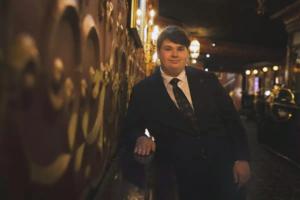
The Magic Castle's training program for kid magicians is like a real-life Hogwarts
LOS ANGELES — Anja Steyn has three disparate loves: puzzles, horror movies and magic.
And during her show at the Magic Castle two weeks ago, she not only predicted the horror film someone was thinking of — she produced an almost-finished puzzle of the movie poster, with the last piece in the unsuspecting audience member's possession.
"Some...Read more

Ex-etiquette: Don't crash the party
Q. I must admit, the transition from being a couple to being single has been difficult to juggle. I’m not always angry and sometimes I think it might be cool to hang out with my ex. So, when he had the kids this weekend I showed up on Sunday and asked if they all wanted to go to breakfast. The kids were very excited and wanted to go, but their...Read more

Lori Borgman: Water tumblers salute Gulp of America
Hydration has officially become the cure for whatever ails us.
Feeling sluggish? Hydrate! Dry skin? Hydrate! Joints hurt? Hydrate! High blood pressure? Hydrate! Ingrown toenail? Hydrate! Don’t know what to make for dinner? Hydrate!
To join the wave of adequate hydration, one of our daughters thoughtfully gifted me with a pink XXL insulated ...Read more
Popular Stories
- Ex-etiquette: Too close to her ex?
- Ask Dating Coach Erika: What's the appropriate length of a date?
- Lori Borgman: Kids pray the darndest things
- The Magic Castle's training program for kid magicians is like a real-life Hogwarts
- The Kid Whisperer: How to teach kids to have fun without causing problems


